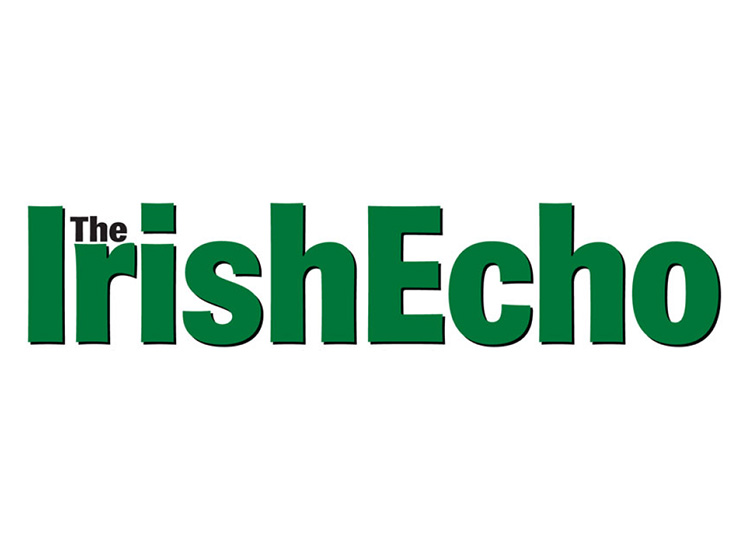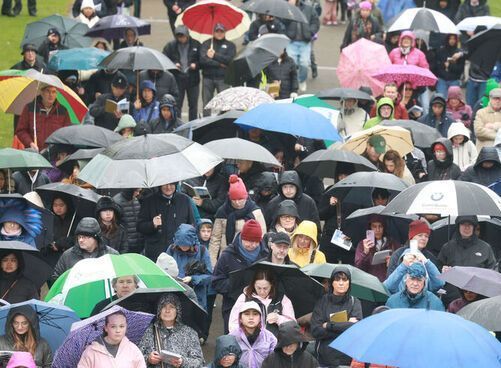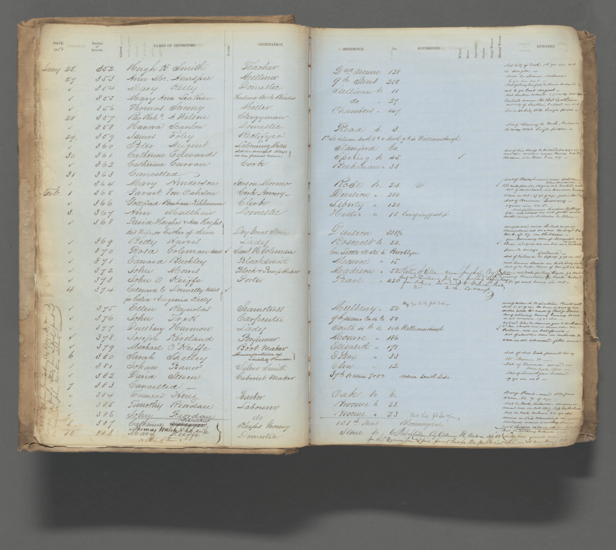Page Turner / Edited by Peter McDermott
“The Long-winded Lady” contributed sketches to the New Yorker’s “Talk of the Town” column that are celebrated for their “keen-eyed observation of the minutiae of New York life,” in the words of a critic in more recent times. The staffer, though, who wrote under that by-line also produced fiction for the publication that often had a somewhat different setting – Dublin or, more specifically, 48 Cherryfield Ave., Ranelagh, the house she lived in as a child.
In the essay “The house that never blew up: Maeve Brennan’s Dublin home,” biographer Angela Bourke writes: “Her many depictions of this house recall Gaston Bachelard’s meditation on the ways a childhood home becomes a lifelong reference point for the human imagination, his insistence that the ‘house is one of the greatest powers of integration for the thoughts, memories and dreams of mankind.’”
Brennan is particularly interesting in this regard because in 1934, not long before her 18th birthday, she left Cherryfield Avenue for Washington DC, where her father had been posted by the Irish government, and would remain a U.S. resident until her death in New York in 1993.
In the essay, her contribution to “The Vibrant House: Irish writing and domestic space,” Bourke quotes novelist John McGahern saying that a “writer writes out of his private world, and that is more or less shaped by the time one is 20, 21 or 22. Everything that happens to you changes you, but that private world is essentially shaped and one always works on that.”
And so, Adam Hanna has written “The vibrancy of first houses in the poetry of Seamus Heaney and Derek Mahon,” while Maureen O’Connor’s essay is “Melancholy ornaments in the house of Edna O’Brien’s fiction.”
Co-editor Lucy McDiarmid returns to the theme of her 2015 book about women in the Easter Rising with her essay “Hairpins among the rifles: the domestic site in women’s accounts of 1916.”
In a striking standalone visual essay – containing at least one image for each of the 14 pieces in “The Vibrant House” – McDiarmid discusses in her caption a famous July 1914 photo from the “Asgard,” a vessel belonging to Erskine and Molly Childers: “A box containing some of the rifles is clearly visible. Spring Rice kept a log of the voyage that records the challenge of housekeeping in the tight quarters on the yacht. So much of the log’s attention is devoted to cooking, the positioning of the mattresses and the quality of sleep that it is almost possible to forget the military object of the voyage.”
Several of the essays are first-person accounts, such as poet and scholar Eiléan Ní Chuilleanáin’s “A moving house.” In 1949, when Ní Chuilleanáin was 7, her father, a professor of Irish, was appointed warden of the Honan Hostel, a Catholic men’s residence attached to University College Cork, and the family moved into the warden’s house. “My sister lamented the change,” she writes, “but I remember no regrets. I had always wanted a house with stairs and this had three impressive flights.”
McDiarmid’s fellow editor Rhona Richman Kenneally told the Echo: “‘The Vibrant House’ is an exciting foray into selected Irish homes, which are explored as ‘vibrant’ spaces whose physical characteristics have a significant effect on the lived experience of the people who occupy them.
“The essays in the book,” she added, “were inspired by the idea that walls, doors, staircases, furniture, etc., are more than mere backdrops to the actions of everyday life: these material elements play key roles—much more than most of us realize—in how we as members of a household relate to each other in our daily environment, in our sense of security, indeed, in how we define and project our identity.”
Richman Kenneally said of her own work generally: “I wear multiple hats, as a professor of the Department of Design and Computation Arts and co-founder and fellow of the School of Irish Studies—both at Concordia University in Montreal—and as the proud mother of Gavin Kenneally.
“I’m the editor of the Canadian Journal of Irish Studies, and have published on domestic space in Ireland, the Irish Countrywomen’s Association, Irish food culture and Irish Famine commemoration, as well as design and sustainability, and Montreal’s Expo 67.”
She continued: “My interest in Ireland and many things Irish began when I met my husband Michael, discovered James Joyce, and fell in love with both of them at more or less the same time. My first degree was, hence, literature, and even though I subsequently changed disciplines, first to study history and then to complete a professional degree followed by a PhD in architecture, the inspiration of each was sustained.
“My graduating project for the professional architecture degree was the design of hypothetical spaces for the main characters of ‘Ulysses’ —a boudoir for Molly and cabman’s shelter for Leopold Bloom, and a library for Stephen Dedalus,” Richman Kenneally said. “I situated these, in my fictional design, on the site of Mycenae which figures in Homer’s original ‘Odyssey.’ Indeed, my whole career has been a cross-fertilization of architecture, design, and literature, all of which helped comprise the backdrop to 'The Vibrant House.'"

Rhona Richman Kenneally
Rhona Richman Kenneally
Place of birth: Montreal, Quebec
Spouse: Michael Kenneally, born in Youghal, Co. Cork. A professor of Irish literature, he is principal and co-founder of the School of Irish Studies at Concordia University in Montreal.
Children: Gavin Kenneally, PhD candidate in engineering at the University of Pennsylvania, co-founder and Chief Product Officer, Ghost Robotics
Residence: Montreal, with intermittent visits to Ireland and Philadelphia
Recent published work: “The Vibrant House: Irish Writing and Domestic Space” (co-editor, Lucy McDiarmid) Dublin: Four Courts Press, 2017.
What advice do you have for aspiring writers?
Everything you’ve experienced in life is relevant to what you’re writing. Whereas the ostensible task is to focus on the subject at hand, that effort must not suppress relational thinking, across potentially relevant broader fields that you already know or are curious about. Keep imagination wide open!
Name three books that are memorable in terms of your reading pleasure.
“Dorothea Lange’s Ireland,” an astonishing collection of photographs by an exceptional artist.
The cookbooks of Irish author and media personality Maura Laverty, which have fueled my research and publications on Irish food and culture. In her recipes and stories, with expertise, wit, and subversion, she reveals much about women’s lives during mid-twentieth century Ireland.
The distinguished Henry Glassie’s “Passing the time in Ballymenone.” An enthralling study of one town in Fermanagh, it’s informative, entertaining, and emotionally powerful.
What book are you currently reading?
Two collections of Kevin Barry’s short stories, “There are little kingdoms and Dark lies the island.” I am supervising a student in our Masters of Design program who is studying the landscapes depicted in these works, and will create a photographic-design research project as a means to contextualize them.
If you could meet one author, living or dead, who would it be?
Thanks to lecture series over many years at our School of Irish Studies, I’ve already met many Irish authors who have had a profound effect on the way I see the world.
What book changed your life?
“Ulysses.” Nothing was the same afterward.
What is your favorite spot in Ireland?
I can’t answer that question on the grounds that it might incriminate me, due to competing family geographic affiliations!
You're Irish if … being Irish is a meaningful concept for you. My father is a Holocaust survivor, my mother’s family escaped a pogrom, and they found a haven in Canada. So I carry the DNA of my ancestors but I’m also Irish, because for the past 40 years I’ve had the privilege to be a member of an Irish family of nine siblings and beyond, living in Youghal, Cork, Kilkenny, the North, the UK, Barcelona, America, Australia and Canada. I’m also a firm believer in Taiye Selasi’s motto: don’t ask me where I’m from, ask me where I’m a local. Forty years of visiting Ireland for personal and professional reasons have given me a sense of that kind of belonging.









